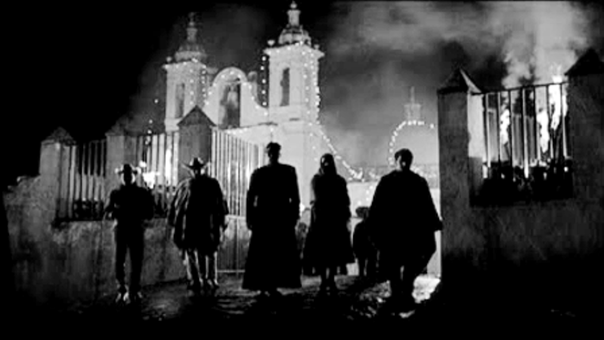At 40 years of Canoa
by Yoshua Oviedo Ugalde

Every human act is a decision that reveals an ideological posture, and cinema, even the mainstream one, complies with this. The long feature Canoa (1976) by Felipe Cazals became 40 years ago a political discourse that gave voice to a whole generation. The projection of this emblematic film in the 31st edition of the International Film Festival in Guadalajara is not random, it is done with a still bleeding memory of the victims of Ayotzinapa.
Taking advantage of the press with its cameras before the gala, the killing of the Honduran activist Berta Cáceres was brought up. It has only been a few days since her killing in her country and since the denial by the Honduran government to let Gustavo Castro return to Mexico. There are no isolated situations, the case of the Costa Rican Jairo Mora (1987-2013), another environmentalist whose murder remained unpunished, was also mentioned.
The Latin American veins are still bleeding, it doesn't matter whether it was the conquistadors of centuries ago, capitalist multinationals or individuals with economic and political interests; Latin-American history has a special chapter tinged with sorrow and death, and which unfortunately is still expanding.
In Canoa, Felipe Cazals brings to light some of the events that occured on September 14, 1968 in San Miguel de Canoa (Puebla); in which a group of workers from the university were brutally attacked by the inhabitants of that place and encouraged by the priest who had convinced them that they were communists.
The relevance of the film not only lies in the exposure of the issue, but also in its structure: one part documents the events in a chronological way, another consists of interviews with the inhabitants and a third one recreates the journey of the young group. These three segments are intertwined through the editing and offer a more profound reading of the events.
Cazals places the camera as if it were a witness, so that the spectators also witness the irrationality of the eclesiastic power that manipulates the town, prompting them to commit barbaric acts.
In 1976 this setting by Cazals and his photography director, Álex Phillips Jr., was risky and innovative. However, by 1969 Miguel Littín had done something similar with his film, El Chacal de Nahueltoro, in which based on real facts, he narrates the vicissitudes of a man who committed some murders.
Althought the essence of both films differs, there are parallels in their technique: Littín explores with his camera the town's reaction halfway between documentary and fiction, to chronologically show the murders and the following execution of José del Carmen. The action of the film is cut with an off voice or a flashback, which made the narrative structure more complex.
Canoa and El Chacal de Nahueltoro share a reflexive and critical gaze on the society in which the events occured. They urge the spectator to attentively observe and reconsider the world in which they exist, their discourse weaves the past with the film's present. And yet, they are prevalent due to the forcefulness of their stances.
Both nourish from the mythic legacy of the Brazilian film Dios y el Diablo en la tierra del sol (1964) by Glauber Rocha, another filmmaker who captured his time through cinema and who revealed the problematic relationships bewteen the religious and political power, so evident in Canoa with the omnipresent figure of the priest who hides behind his sun glasses, refusing to see the reality.
At 40 years of Canoa its legacy is still present in the Mexican cinematographic imaginary, although it has undergone some changes. While in Cazal's film the police and the army intervene and save three workers, more recent proposals don't have such a positive vision of the armed forces, like the film Batalla en el cielo (2005) by Carlos Reygadas, that harshly attacks the family, religious and military institutionalization.
In these four decades, the pages of the Latin American press have added names, people who defended their ideals, fought for human rights or simply saw their lives being snatched away by the ailing power of a few who dictate how we must live or think. What we must extract as human beings, is the reflection that what happened in San Miguel Canoa, Tlatelolco or Ayotzinapa must not happen again.

